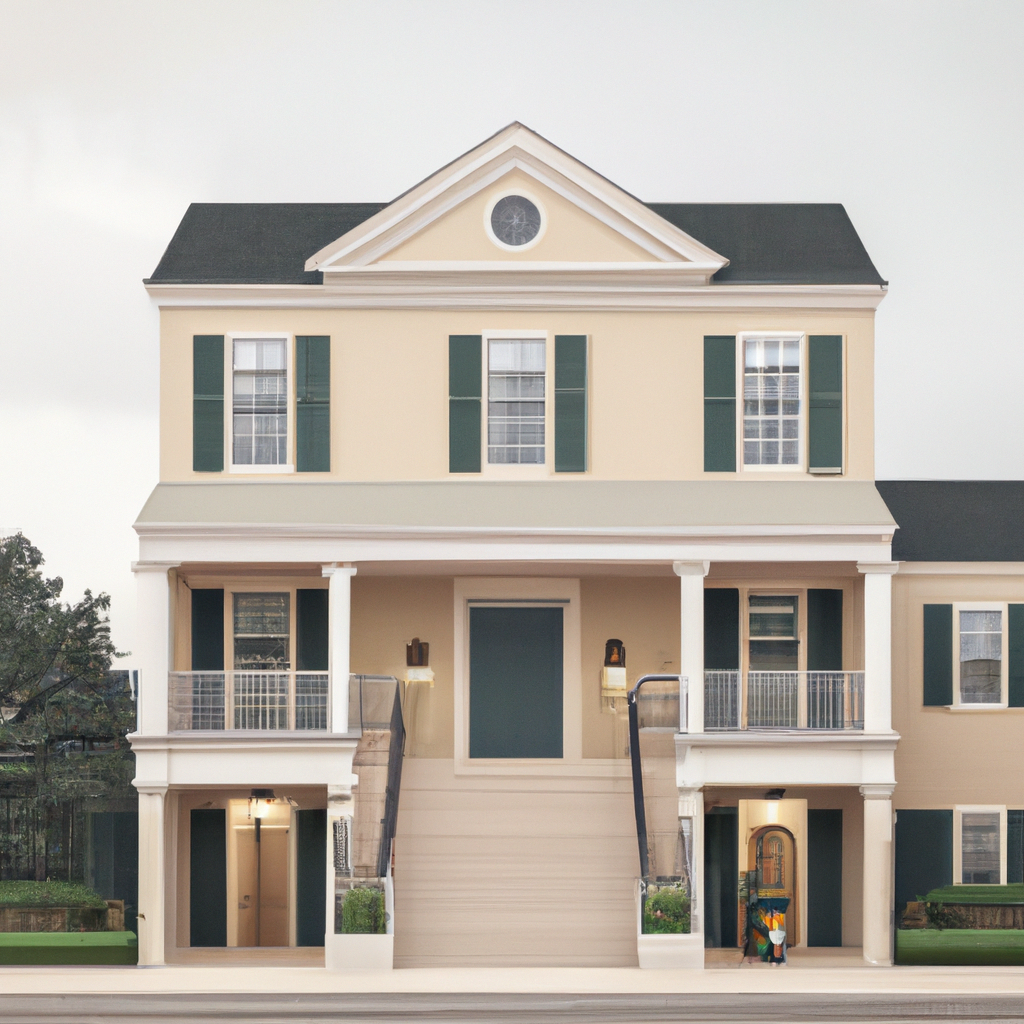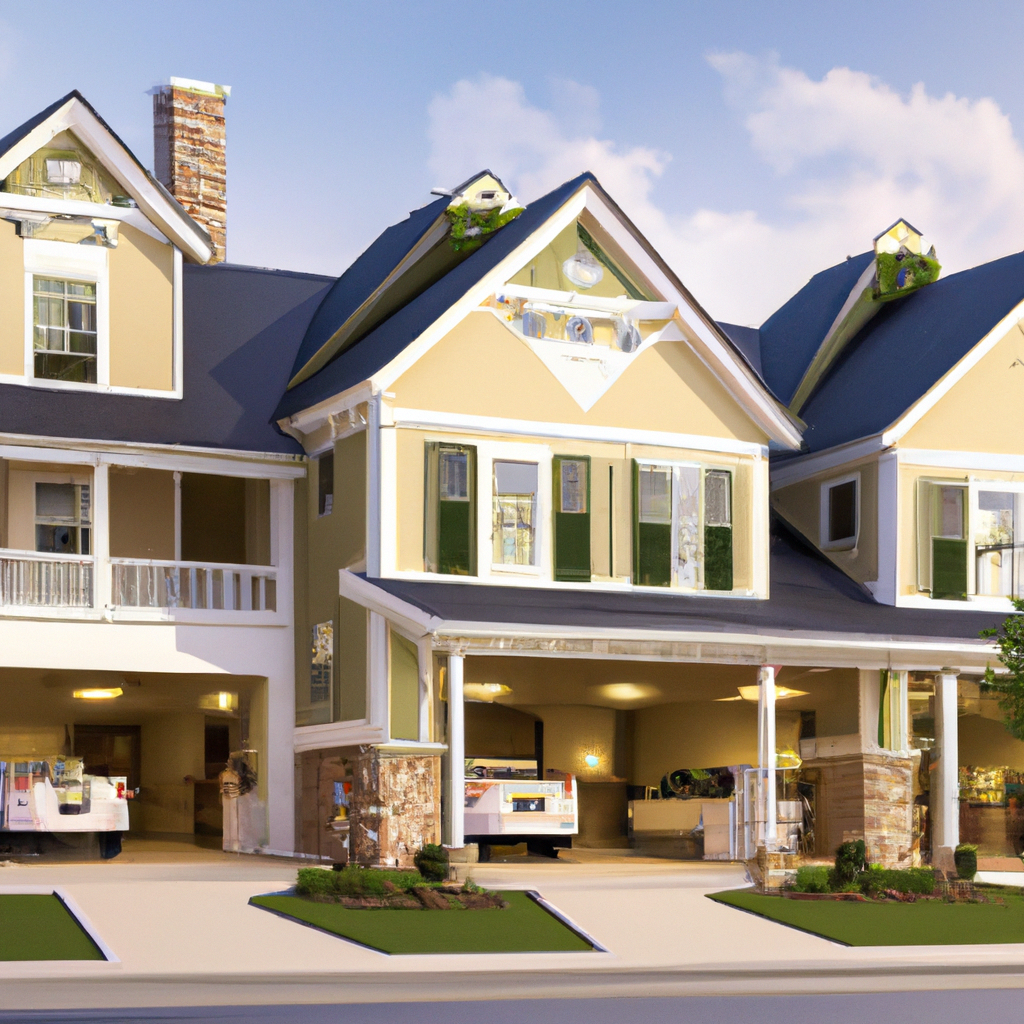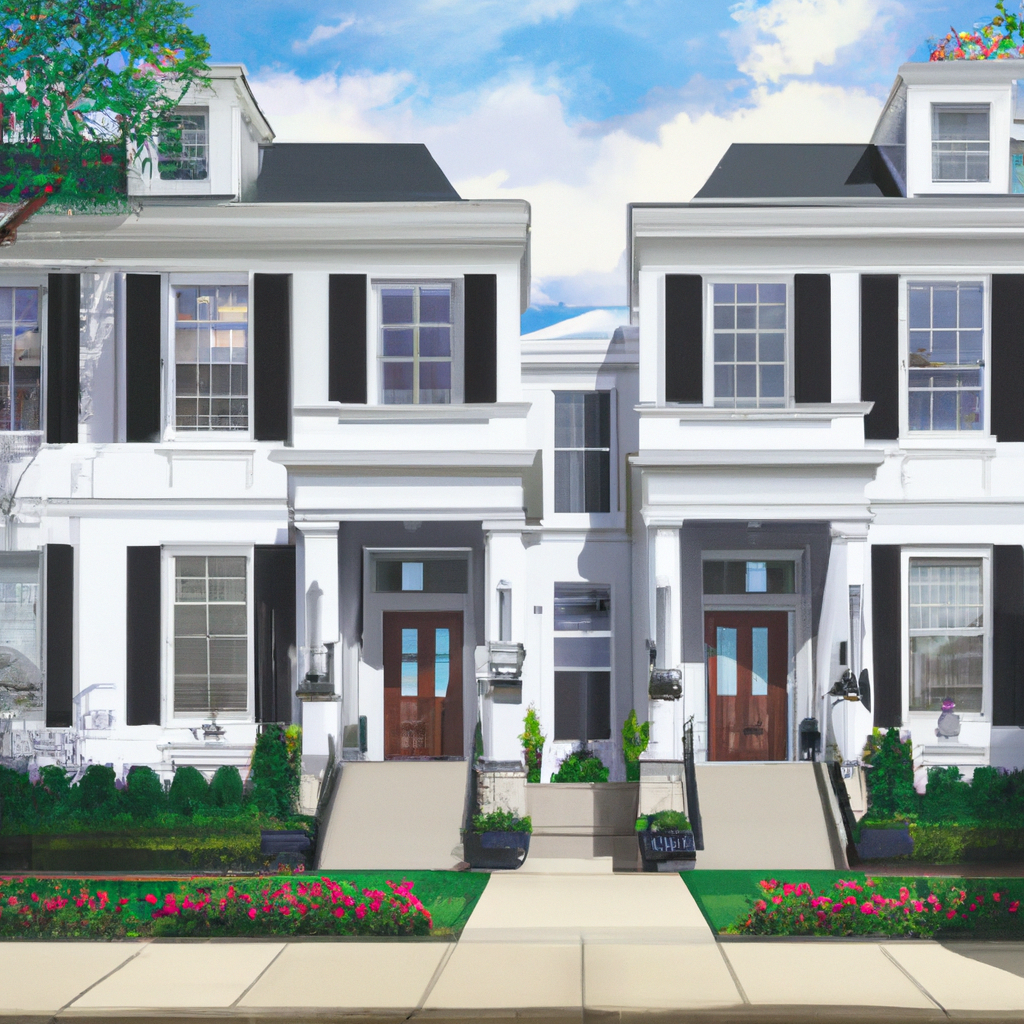
On Sunday February 6, 2022 Princeton University’s carillonneur Lisa Lonie will perform the 1:00 concert. Concerts are free and performed rain or shine. The grounds surrounding the Cleveland Tower afford many opportunities to socially distance.
Greater Princeton, NJ is a region located in central New Jersey, encompassing the town of Princeton and surrounding areas. It is home to prestigious universities such as Princeton University and Rider University, as well as several research institutions, including the Institute for Advanced Study and the Princeton Plasma Physics Laboratory. The region offers a diverse range of cultural, recreational, and culinary experiences, including museums, parks, theaters, and restaurants. It is also conveniently located within easy access to major metropolitan areas such as New York City and Philadelphia.


On Sunday February 6, 2022 Princeton University’s carillonneur Lisa Lonie will perform the 1:00 concert. Concerts are free and performed rain or shine. The grounds surrounding the Cleveland Tower afford many opportunities to socially distance.
Like Loading…


The Stoutsburg Sourland African American Museum, central New Jersey’s only Black history museum, is proud to present “Meet Sojourner Truth,” a live theatrical performance about the life of activist, abolitionist, and former slave Sojourner Truth, at 6 PM (Eastern time) this Tuesday, February 8, on Zoom. SSAAM invites students, teachers, history buffs, and members of…


Gov. Phil Murphy gave his annual state of the state address on Tuesday evening. He talked about the state’s response to the pandemic for much of the address, while also discussing the economy, property taxes, and education funding. The speech was prerecorded due to the pandemic rather than being presented live before an audience at the Statehouse in Trenton.


Gov. Phil Murphy on Tuesday reinstated the state’s public health emergency due to the spread of the Omnicron variant of COVID-19.
The state of emergency is in effect across all 21 counties in New Jersey. It extends various executive orders and regulatory actions taken by state agencies in response to the pandemic and will allow the state to continue vaccine distribution, vaccination or testing requirements in certain settings, the collection of COVID-19 data, the implementation of recommendations of the Centers for Disease Control and Prevention to prevent or limit the transmission of COVID-19, staffing and resource allocation, and other components of the State’s COVID-19 response.
Existing orders requiring masking in school and daycare settings will remain in effect. The public health emergency declaration also empowers all state agencies to take steps to continue to address the public health hazard resulting from new variants of COVID-19.
“COVID-19 remains a significant threat to our State and we must commit every resource available to beating back the wave caused by the Omicron variant,” Murphy said. “While we hope to return to a state of normalcy as soon as possible, the step I am taking today is a commonsense measure that will protect the safety and well-being of all New Jersey residents while allowing state government to respond to the continuing threat that COVID-19 poses to our daily lives.”


Do you have questions about estate taxation? This seminar will discuss several proposed changes, how they could impact your plan, and the effects they can have for you and your family. RSVP:
https://attendee.gotowebinar.c…
Like Loading…


Join family and friends for our winery Sunday music series.
Grab a glass of one of our award-winning wines, sit back, relax, and enjoy live music from local artists each week. Styles range from Jazz and Blues to Folk and Rock. Music is from 1pm-4pm.
The winery is a great break for cabin fever. Our fire pits will be going and plenty of seating around fires and heaters. Enjoy the fresh farm fresh air. Limited indoor seating. We encourage dressing warmly for our outdoor seating.
Seasonal hot mulled wine is a favorite and a great way to warm up. With 16 varieties of wine made with Terhune’s own grapes as well as three wines from our apple cider, tasting flights are a great way to sample the wide offerings. All ages can have fun with s’mores and hot cocoa kits. Our Barn Door Café will have light fare, while cheese plates and chips & salsa baskets are available at the winery. Perfect to enjoy with a glass of wine.
Music Schedule:
January 9 – Sarah Teti
January 16 – Carmen Marranco
January 23 – Bud Belviso
January 30 – Wassail Festival
February 6 – Rich Seiner
February 13 – Jerry Steele
February 20 – Sarah Teti
February 27 – Bob O’ Connell
March 6 – Rich Seiner
March 13 – Carmen Marranco
March 20 – Jerry Steele
March 27 – Jerry Monk
Come and enjoy fresh air on the farm. Stop in the farm store for fresh produce, baked goods and local gourmet items.
Music is weather dependent. Inside seating is limited. Dress warmly for outside seating.
Like Loading…


Gov. Phil Murphy declared a state of emergency on Thursday night ahead of the winter storm that is expected to bring four to six inches of snow to the Princeton region. The state of emergency goes into effect at 10 p.m. Thursday night for all 21 counties in New Jersey.
State offices will have delayed openings at 11 a.m. for non-essential personnel on Friday.
Commercial vehicle restrictions will be in place on multiple interstate highways beginning at 10 p.m. Thursday night.
Officials from the state have asked all residents who can work from home to do so on Friday due to the hazardous driving conditions the storm is expected to create.
“The anticipated winter storm is forecasted to bring significant snowfall statewide, with snowfall rates approaching two inches per hour in certain areas and heavy wind gusts,” Murphy said. “Residents should stay off the roads, remain vigilant, and follow all safety protocols.”
State Director of Emergency Management and Superintendent of the State Police Colonel Patrick Callahan said troopers throughout the state are ready to assist residents and drivers both on and off of the roads for the duration of this storm. “However, we cannot do it without the help of our communities. Please use caution if you must travel, prepare emergency kits for use at home and in your vehicle, and check on your neighbors,” Callahan said.
New Jersey Department of Transportation Commissioner Diane Gutierrez-Scaccetti
has issued a commercial vehicle travel restriction on multiple Interstate highways. The
travel restrictions are being coordinated with neighboring states. In addition to the commercial restrictions, all motorists are encouraged to avoid unnecessary travel Thursday night and Friday morning.
The commercial vehicle travel restriction will be in place until further notice for the following highways in both directions:
• I-76, from the Walt Whitman Bridge (Pennsylvania border) to Route 42
• I-78, from the Pennsylvania border to I-95 (New Jersey Turnpike)
• I-80, from the Pennsylvania border to I-95 (New Jersey Turnpike)
• I-195, from I-295 to NJ Route 138
• I-280, from I-80 to I-95 (New Jersey Turnpike)
• I-287, from NJ Route 440 to the New York State border
• I-295, from the north to the Scudders Falls Bridge (Pennsylvania border)
• NJ Route 440, from the Outerbridge Crossing to I-287
• I-676, from the Ben Franklin Bridge (Pennsylvania border) to I-76
The commercial vehicle travel restriction applies to:
• All tractor-trailers
• Empty straight CDL-weighted trucks
• Passenger vehicles pulling trailers
• Recreational vehicles
• Motorcycles
This restriction DOES NOT apply to:
• The New Jersey Turnpike
• The Garden State Parkway
• The Atlantic City Expressway
Trucks that are already in New Jersey when the travel restrictions go into place are encouraged to pull off in truck stops to wait out the storm. Trucks should not park on highway shoulders.


The Princeton Office of Emergency Management and Mayor Mark Freda have declared a state of emergency due to the rapid spread of the COVID-19 Omicron variant in the municipality. Face masks will be required in public indoor spaces.
On Jan. 10, the Princeton Health Department reported its highest new COVID-19 case numbers ever, with 287 positive cases for the previous seven days and 568 for the previous 14 days.
“Princeton’s record level of COVID-19 cases, combined with the colder weather that has driven people indoors, the spike in the demand for testing and increase in hospitalizations, has prompted us to take these appropriate steps,” said Michael Yeh, Princeton’s Director of Emergency Services.
Beginning at 5 a.m. on Thursday, Jan. 13, face coverings will be required in restaurants, bars, gymnasiums, dance studios, recreation facilities, retail stores, cafes, supermarkets, convenience stores, places of worship, commercial establishments, salons, barbershops, banks, healthcare facilities, hotels, and government buildings and facilities. South Brunswick Township issued a similar mandate more than a week ago.
As part of the mask mandate, employees and patrons of businesses in Princeton must wear a face mask at all times except when actively eating or drinking, when socially distanced at least six feet apart from all others for an extended period of time, and when performing for an audience or worship service. People with a medical condition that precludes the wearing of face coverings and children under the age of three are exempt from the requirement. Establishments will be required to post signage notifying patrons of the requirement.
“Wearing masks, especially in indoor settings, is known to be an effective way of combating the spread of COVID-19 and its variants,” said Princeton Health Officer Jeff Grosser. “We need to reduce the number of new cases locally and thus, reduce the impact of COVID-19 on area hospitals and testing sites.”
The order will remain in effect until Jan. 31, unless modified or extended by further order.


Parking in Princeton remains a thorny problem, and many are looking for a good solution. Recently, an organization named Sensible Streets initiated a campaign to counter the work of the Princeton Parking Task Force and its current proposal for a more equitable parking program in the municipality.
It is easy to see the power of making broad sweeping statements for both the pros and cons on a topic that is emotionally charged.
As residents and small business owners, we are writing to correct some of the talking points that have been presented by Sensible Streets. The work of the task force over the course of 3 years represents a true collaboration among a diverse community of neighbors. An open and inclusive process led to compromises, which reflect a give and take on the part of community members with many different viewpoints. The proposed program will bring more equity and harmonization to the perennially difficult parking landscape in Princeton.
For this letter, we have highlighted just a few of the most prominent assertions made by Sensible Streets, which need context and clarification:
Claim: Adding employee parking creates narrower driving lanes with more traffic congestion and obstructed sight lines for cars and children. Bus pickups and school drop-offs become more dangerous for children and drivers.
Fact: Parking on public streets is legal on almost every street in central Princeton. Limitations only concern the time of day and duration when cars can park on a street. Having a small number of additional parked cars does not make for a less safe municipality. In fact, street parking serves as a recommended traffic calming practice to deter speeding and cut-through traffic.
Claim: Employee parking in your neighborhood means narrower streets, more double parking when delivery trucks and contractors are on the street, and more congestion.
Fact: There is no evidence that this is true. Instead, having the permit parking for homeowners could guarantee a minimum of 1 parking spot for residents. Here is how the number of parking spots per street for employee permits will be determined under the proposal: The number of possible parking spaces is capped; then residents have first right of refusal for up to 2 permits; of left-over possible spots a maximum of 50% can be purchased for employee parking. For a street like Moran Ave, no employee permits would be issued. For a street like Linden Lane the maximum would be 9 permits.
Claim: Fewer spots for residents means more time searching for a parking place.
Fact: Virtually all residents have parking spaces in driveways that they own. Those who do not have a driveway will have more and guaranteed options for parking under current Parking Task Force proposals.
Claim: Subsidizing businesses like Lululemon and Starbucks with dedicated parking in front of your home enables them to pay their workers less. Businesses themselves should cover the cost of employee parking, not us.
Fact: The logic by which affordable employee parking would lead to a reduction in wages is hard to follow. In fact, the opposite holds: employers providing affordable parking ensure the employee retains more of their earnings.
Sensible Streets mentions that this proposal supports corporate stores. However, this parking program would actually help employees primarily of local businesses and not in the form of a subsidy but as a cost
to the businesses. The Task Force’s proposals do not add cost to taxpayers since permit fees would cover the program’s costs.
Claim: Packing streets with cars and asking employees and patrons to walk through residential neighborhoods late each night will lower the market values of our homes.
Fact: Employees are already walking through most neighborhoods at night to retrieve their cars. Yet Princeton property values keep rising. This proposal in fact serves as a vehicle to ensure that there is limited employee parking in neighborhoods as the number of permits is controlled per street, with residents given priority for permitting.
Claim: The proposal includes the hiring of a technology firm with license plate reader technology to patrol and scan neighborhoods 3x/day for a lion’s share of the revenues generated from parking.
Fact: In the early stages of discussions, use of technology was proposed as an option for monitoring parking permits. Through inclusive neighborhood meetings, this option was removed from consideration in July 2021. This is just one of many examples of how the Task Force has been evolving through public input.
Claim: Tree-lined streets are not a resource to be exploited. They are an asset to protect. Appropriating Princeton’s neighborhoods for commercial parking exploits Princeton’s distinct residential districts for the benefit of businesses and developers.
Fact: Tree-lined streets are not being exploited under this program. Community owned asphalt is being utilized to alleviate some of the economic pressures lower wage workers must endure, as well as provide much needed space for those with inadequate parking. Public property is generally meant to be used for the benefit of all, not just the private property owners adjacent to it.
Claim: Historic neighborhoods like Witherspoon-Jackson and the Western District deserve to be protected from commercial spillover. A vibrant downtown is not Princeton’s only asset.
Fact: A walk through the Witherspoon-Jackson neighborhood can reveal that half the neighborhood has been welcoming “spillover” for years. Many employees live in the WJ neighborhood and many walk through WJ to get to their vehicles at the Community Park lot. These “impacts” have not degraded the historic character of the neighborhood. They are simply part of that character.
Claim: The parking proposal has been described as “gargantuan” “far reaching” and “highly complex”. Why didn’t the Council make residents aware of the details and impacts?
Fact: As stated, the parking task force meetings have been open to the public, ongoing for years, and reported on by local media. Meetings have been held with all sections of town in a transparent process. It is crucial to note that Sensible Streets has, by contrast, been operating anonymously and without transparency.
Claim: Princeton residents pay handsomely for our streetscapes. Let’s put tax dollars to better use to solve the problem and create a more livable Princeton.
Fact: Princeton businesses, which are often owned by Princeton residents, also pay handsomely through their tax dollars. The parking program being proposed does not make Princeton any less livable. It simply allows a few more cars to park for a few more hours on some blocks in town.
We encourage all Princetonians to explore the parking proposal and join the conversation.
Gabrielle Carabone & Matthew Errico– The Bent Spoon
Laurent Chapuis – The Corkscrew
Jessica Durrie – Small World Coffee
Aubrey Haines – Princeton Property Partners
Kathy Klockenbrink – Jammin Crepes
Jon Lambert – Princeton Record Exchange
Raoul Momo – Terra Momo Restaurant Group
Heidi Moon – Miya’s Table & Home
Dean Smith & Joanne Farugia – JaZams Toys & Books
Dorothea von Moltke — Labyrinth Books


To the Editor:
I’d again like to make some comments regarding the Princeton Permit Parking Task Force and the odyssey that we, the community, have all been swept up in during this past year, due to their efforts and actions.
I’d like to preface this by stating that I can only imagine how crushing it must be at times to be dead set on something – put in the time and work on it – and then have it met with mass criticism, opposition and unpopularity. On this, the Princeton Permit Parking Task Force members have my sincere empathy. I’ve been there in my own endeavors.
With that said, it is vital, for the Princeton Permit Parking Task Force to actually listen to their constituency and not simply dismiss their concerns; confident their own opinions are 100% correct – thus medicine that must just be accepted. I would ask them to consider the tremendous strain their efforts have put upon many in the community, who have felt under siege throughout this past year. One would think that with so many residents making their views and concerns known directly at meetings, as well as in public forums and letters, that some heed would be paid, and that the Princeton Permit Parking Task Force would have taken these strongly expressed concerns into account. Instead, it appeared that the task force members were exceedingly dismissive, stubbornly entrenched in their ideas, and determined to do what they pleased. They have demonstrated this repeatedly, through a lack of transparency and with a seeming vested interest in favoring the desires of businesses over residents – all culminating in a decided disinterest in these expressed concerns. Their efforts to push through with their plans during times when people were generally away – distracted in the summertime, and recently during the holidays – optically appear exceedingly disingenuous.
While it’s refreshing to finally see that some effort has been made in response to the overwhelming push-back, it is still troubling and not nearly enough. At best it needs more work via actual concerted input from concerned and engaged residents; at worst it should be scrapped and begun anew with a fresh, more transparent process and outlook that engenders trust. The fact that the plan continues to include complicated conditional rules which charge residents for permits to park on their own streets in their own neighborhoods is simply a non-starter and needs to be scrapped. Something simple and all-encompassing for the already over-extended taxpaying resident along the lines of, say, two gratis street permits per household, is what’s in order. It’s unacceptable to set a precedent of granting businesses permits to park on residential streets. It’s inappropriate to view residential streets as a resource to solve businesses’ obligation to provide parking for their employees. Resources like the downtown parking garages and the Westminster Choir College are appropriate and should be vigorously pursued, and the residential streets should left to be just that…residential.
There is more to be said and considered. Many letters are out there and are still coming in. I strongly urge the Princeton Permit Parking Task Force to read them and truly give them the respect and consideration that they are due.
Bruce Lawton
Hawthorne Avenue